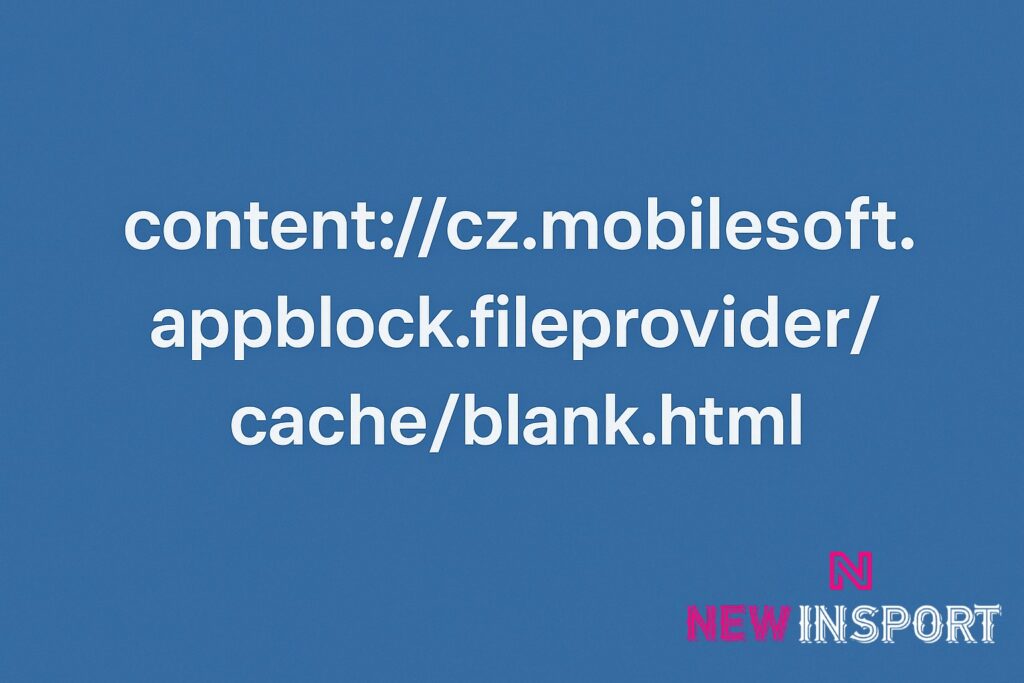Introduction
If you’ve come across the odd string content://cz.mobilesoft.appblock.fileprovider/cache/blank.html
You’re not alone on your Android device. When using the AppBlock app or when web/app restrictions are in effect, many users come across this enigmatic-looking path. It may appear concerning at first—almost like a virus, bug, or broken link. But don’t worry, it’s not malevolent.
This tutorial will explain the exact meaning of this URI, its appearance, its safety, and how to fix any associated problems. We’ll also examine the operation of Android’s FileProvider system and the rationale behind developers’ use of it for local file management.
You will have a thorough understanding of the content’s purpose by the end of this article: //cz.mobilesoft.appblock.fileprovider/cache/blank.html and how to control it on your device.
What Does content://cz.mobilesoft.appblock.fileprovider/cache/blank.html Mean?
To truly understand this path, let’s break it into smaller parts:
1. content://
This prefix is part of Android’s content URI scheme. Unlike http:// or https://, which load data from the web, content:// points to local data on your device through a content provider.
2. cz.mobilesoft.appblock.fileprovider
This is the authority—it identifies which app manages the data. In this case, it’s AppBlock, developed by MobileSoft s.r.o. AppBlock is a popular productivity tool that helps users block distracting apps and websites.
3. /cache/blank.html
This refers to a blank HTML file stored in AppBlock’s cache folder. When AppBlock blocks a site, it doesn’t just show an error—it often loads a local blank page instead.
Why Does This File Appear on Android Devices?
There are several reasons why users encounter this URI:
🔹 Blocking a Website or App
When AppBlock restricts access to a website, it replaces the content with a blank local page (blank.html) rather than letting you through.
🔹 Redirect Mechanism
Instead of displaying an error, AppBlock smoothly redirects requests to a cached local file. This ensures speed and privacy.
🔹 Placeholder Use
Sometimes apps generate placeholders like this to maintain stability during blocking or loading delays.
Is content://cz.mobilesoft.appblock.fileprovider/cache/blank.html Safe?
Yes, it is completely safe. Here’s why:
- It’s not a web URL but a local URI.
- It doesn’t connect to the internet, so it can’t download malware.
- It comes from AppBlock, a legitimate productivity app with millions of downloads.
- Android’s FileProvider mechanism ensures security by granting temporary access to specific files only.
👉 If you don’t use AppBlock and still see this path, it might be due to leftover cache or another blocking app using a similar mechanism.
How to Fix Issues with content://cz.mobilesoft.appblock.fileprovider/cache/blank.html
Sometimes, users report glitches—like being stuck on a blank page or seeing this path repeatedly. Here are fixes:
1. Update AppBlock
Outdated versions may cause cache problems. Always update from the Google Play Store.
2. Clear AppBlock’s Cache and Data
- Go to Settings > Apps > AppBlock
- Tap Storage & cache
- Hit Clear cache (or Clear storage if needed)
3. Reinstall AppBlock
Uninstall and reinstall the app to reset all configurations.
4. Check for Conflicting Apps
Running multiple blockers (like Digital Wellbeing, Focus apps, or third-party firewalls) can cause conflicts. Disable duplicates.
5. Uninstall AppBlock (if unwanted)
If you don’t need AppBlock, uninstall it to prevent the URI from appearing.
Technical Insight: Why Developers Use FileProvider
For Android developers, using FileProvider is essential. It:
- Secures file sharing between apps.
- Prevents direct access to internal storage.
- Grants temporary permissions via
content://URIs. - Avoids exposing file paths, which could be a security risk.
In this case, AppBlock utilizes FileProvider to serve a local blank page, rather than leaving users with broken content.
Conclusion
There is no reason to be alarmed by the enigmatic-looking path content://cz.mobilesoft.appblock.fileprovider/cache/blank.html. The AppBlock app uses this secure local file reference to seamlessly block content. Although it may seem unusual, it is a component of Android’s secure FileProvider system.
Updating AppBlock, clearing its cache, or reinstalling it usually resolves persistent issues. Simply uninstalling AppBlock will prevent the URI from appearing for users who do not require it.
FAQs
1. What is content://cz.mobilesoft.appblock.fileprovider/cache/blank.html?
It’s a local Android URI generated by AppBlock, pointing to a blank HTML file used for blocking apps or websites.
2. Is it a virus or malware?
No. It’s a safe placeholder page, not harmful software.
3. Why does my phone show this URI instead of a blocked site?
Because AppBlock replaces restricted content with a local blank file instead of showing an error page.
4. Can I delete blank.html manually?
Not directly. It’s managed by AppBlock’s cache system. You can clear cache or uninstall the app to remove it.
5. Do I need to worry if I don’t use AppBlock?
If you see this and don’t use AppBlock, check for other similar apps or clear leftover cache files.
👉 Stay informed, stay secure, and keep your device optimized. For more guides like this, visit newinsport for in-depth tech insights.



